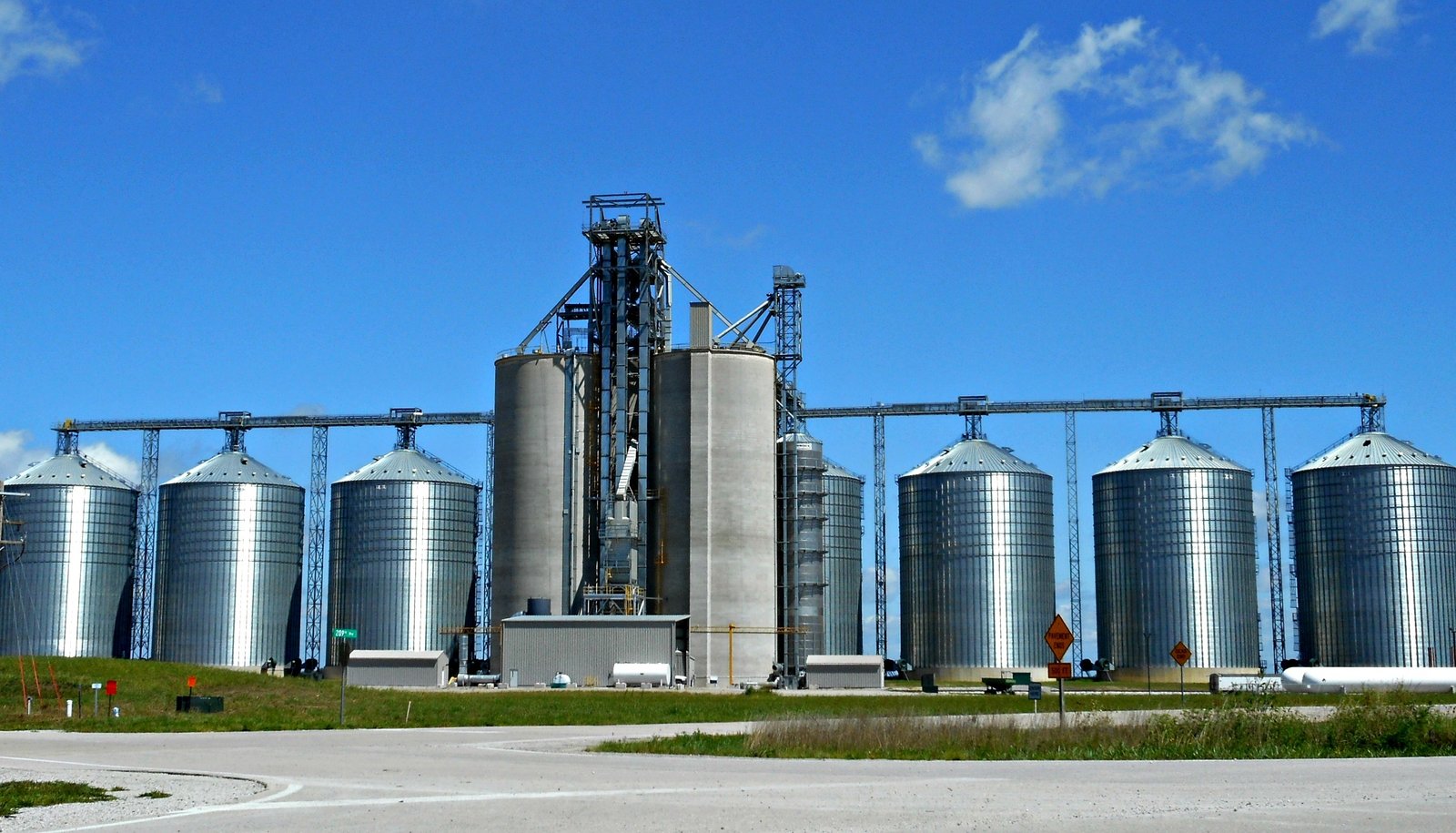Welcome to the captivating world of SEO, where the secret lies in unraveling the mysteries of content silos and site structures. In this article, we delve into the untamed realm of search engine optimization, unlocking the hidden potential that lies within your website’s architecture. We bring forth the power of seamless organization, harmoniously connecting each piece of content to create a symphony that resonates with both users and search engines. Join us on this exhilarating journey as we explore how content silos and site structures hold the key to unlocking unparalleled SEO prowess. Brace yourself for an enlightening encounter that will revolutionize the way you view your website and its untapped potential. Welcome to the realm where creativity meets neutrality, where the magic of SEO unfolds before your very eyes. So, buckle up and prepare to unravel the true power that lies within content silos and site structures; for the adventure awaits!
Table of Contents
- Mastering Content Silos: The Key to Unlocking SEO Success
- Creating a Cohesive Site Structure: A Roadmap to Higher Rankings
- Optimizing Internal Linking: Harnessing the SEO Potential of Site Connectivity
- The Power of Topic Clusters: Boosting Organic Traffic with Content Silos
- Q&A
- To Conclude

Mastering Content Silos: The Key to Unlocking SEO Success
When it comes to achieving SEO success, mastering content silos is the key that unlocks your website’s potential. Content silos refer to a strategic organization of your site’s content that helps search engines understand the relevancy and hierarchy of your pages. By grouping related content together, you are able to create a clear structure that not only assists search engine crawlers but also enhances the user experience. It’s like having a well-organized library where every book is labeled and organized by topic, making it easier for readers to find what they’re looking for.
Think of content silos as the pillars of your website’s SEO strategy. By structuring your content in silos, you create a logical flow that search engines can easily understand and navigate. This helps search engines determine the context and relevance of each page, increasing the chances of your website ranking higher in search results. Content silos not only improve your website’s SEO but also provide a seamless user experience by making it effortless to navigate between related topics. So, whether you’re just starting with SEO or looking to take your website to the next level, mastering content silos is the ultimate power move that can unlock your site’s true potential.

Creating a Cohesive Site Structure: A Roadmap to Higher Rankings
Imagine building a house without a solid foundation – it may look appealing from the outside, but it’s bound to collapse sooner or later. The same principle applies to your website’s structure. A cohesive site structure acts as the backbone of your SEO efforts, determining how search engines understand and rank your content. To unlock the true potential of your website and rise to the top of search engine results pages, let’s embark on a journey to unravel the power of content silos and site structures.
First things first – what are content silos? Think of them as compartments within your website, each housing a specific topic or theme. By organizing your content into these silos, you create a logical hierarchy, making it easier for search engines and visitors to navigate your site. This targeted approach allows you to establish yourself as an authority in your niche while boosting your rankings for relevant keywords. It’s like dividing your vast collection of books into genres, ensuring readers find exactly what they’re looking for.
- Simplifying Navigation: A well-structured site with clear content silos enables users to find information quickly and effortlessly. It’s like providing them with a handy roadmap, guiding them to their desired destination.
- Enhanced User Experience: When visitors can easily access relevant content, they spend more time exploring your site. This reduces bounce rates, increasing engagement and conversions.
- Keyword Optimization: By grouping related content together, you can focus on keyword targeting and internal linking within each silo. This helps search engines understand your site’s semantics and ranks your pages higher for relevant search queries.
- Improved Crawling and Indexing: A logical site structure allows search engine bots to crawl and index your pages more efficiently, ensuring your content gets discovered faster.

Optimizing Internal Linking: Harnessing the SEO Potential of Site Connectivity
When it comes to maximizing your website’s SEO potential, internal linking is an essential strategy that should not be overlooked. By effectively connecting different pages within your site, you can create a well-structured website that not only enhances user experience but also improves your search engine rankings. Here, we will unravel the concept of content silos and delve into the importance of site structures to help you harness the true power of SEO.
Content silos can be likened to separate compartments within your website, each containing a specific theme or topic. By organizing your content into silos, you create a clear and logical hierarchy that search engines can easily understand. This allows search engines to identify the main topics and keywords associated with each compartment, making it easier for them to index and rank your pages accordingly. By connecting these silos through internal linking, you not only strengthen the overall structure of your website but also guide search engine crawlers towards your most important and relevant content.
- Boosted Rankings: Well-optimized internal linking helps search engines identify the relationship between different pages on your website. This not only improves the visibility of your content but also boosts your search engine rankings. When search engines see that your website has a logical and well-connected structure, they are more likely to display your pages higher in search results.
- Enhanced User Experience: A well-structured website with proper internal linking enhances user experience by providing visitors with easy navigation. When you connect related pages within your website, users can seamlessly navigate through your content, finding relevant information without any friction. This not only keeps users engaged but also increases the chances of them spending more time on your site and exploring other sections.
- Increased Indexing: By providing internal links between pages, you make it easier for search engine crawlers to find and index new content. When search engines encounter internal links, they follow them to discover new pages and understand their importance within your website. This results in faster indexing and better visibility of your content in search engine results.

The Power of Topic Clusters: Boosting Organic Traffic with Content Silos
When it comes to boosting organic traffic, topic clusters and content silos are an SEO strategy that can work wonders for your website. By organizing your content in a way that search engines can easily understand, you can significantly improve your chances of ranking higher in search results.
Imagine your website as a library, and each topic cluster as a section within that library. Content silos are the shelves within each section, holding closely related pieces of content. This organization helps search engine crawlers navigate through your site and understand the relationships between different pieces of content. By linking these content silos together, you are essentially building a web of relevance around your website, signaling to search engines that you are an authority on the topic.
Here are some reasons why topic clusters and content silos are invaluable for boosting organic traffic:
- Improved SEO Ranking: By grouping related content together, search engines can better understand the context and relevance of your website, improving its chances of ranking higher in search results.
- Enhanced User Experience: Content silos make it easier for users to find relevant information on your website. When visitors can easily navigate through your content, they are more likely to stay longer, reducing bounce rates and increasing your chances of converting them into customers.
- A Comprehensive Approach: Building content silos allows you to cover a topic comprehensively. By creating pillar content that serves as the main hub for each topic cluster, you can provide visitors with a wealth of information and establish yourself as an authority in your niche.
- Increased Organic Traffic: When your website ranks higher in search results, you are more likely to attract organic traffic. Content silos enable you to target multiple long-tail keywords, capturing the attention of various segments of your audience.
So, if you are looking to harness the power of topic clusters and content silos to boost your organic traffic, start by structuring your website in a way that makes it easy for search engines and users to navigate. By organizing your content strategically, you can unlock the full potential of SEO and establish yourself as a prominent player in your industry.
Q&A
Q: What is the concept of content silos in SEO?
A: Content silos refer to the way information is organized and categorized on a website. It involves grouping related content together to establish topical authority and improve search engine visibility.
Q: How does organizing content into silos benefit SEO efforts?
A: Content silos help search engines understand the hierarchy and relevance of your content, making it easier for them to crawl and index your site. This can result in higher rankings for target keywords and improved user experience.
Q: What elements contribute to an effective content silo structure?
A: An effective content silo structure relies on a logical hierarchy, with broader topic categories at the top and narrower subtopics branching out underneath. It also involves interlinking relevant articles within the same silo to establish topic authority.
Q: How does an optimized site structure impact SEO?
A: A well-optimized site structure helps search engines understand the organization and content flow of your site. This can lead to higher crawlability, better indexation, and improved user experience, all of which are key factors in SEO success.
Q: Are there any challenges or drawbacks to implementing content silos?
A: While content silos can benefit SEO efforts, their implementation can be complex and time-consuming. It requires careful planning, content mapping, and structural adjustments. Additionally, maintaining consistent internal linking across silos can be a challenge.
Q: Can content silos be applicable to all types of websites?
A: Yes, content silos can be applied to any type of website, regardless of its size or industry. Whether you’re running a blog, e-commerce site, or corporate website, implementing content silos can streamline your SEO efforts.
Q: How can content silos be implemented effectively on an existing website?
A: Implementing content silos on an existing website involves analyzing your current content, identifying relevant topics, and restructuring the website’s navigation and internal linking accordingly. It may also require updating URL structures and optimizing meta tags.
Q: Is it necessary to prioritize SEO or user experience when implementing content silos?
A: A successful SEO strategy focuses on balancing both SEO and user experience. While content silos serve to improve search engine rankings, they should also enhance the user journey by providing a seamless and intuitive navigation experience.
Q: Are there any SEO best practices to follow when creating content silos?
A: Yes, there are several best practices for creating content silos. These include conducting keyword research, creating comprehensive pillar content for each silo, optimizing URL structures, using descriptive headers and title tags, and ensuring proper internal linking between related articles.
Q: Can content silos boost organic traffic and overall website performance?
A: Yes, when implemented correctly, content silos can contribute to increased organic traffic and improved website performance. By creating a clear and organized site structure, search engines are more likely to recognize your site as an authoritative source and reward it with higher visibility in search results.
Key Takeaways
In conclusion, the power of SEO becomes even more profound when we delve into the intricacies of content silos and site structures. By unraveling the hidden potential within our websites, we can unlock a world of opportunities to boost our online visibility and enhance user experience.
Content silos are not just organizational tools; they are the roadmap guiding both search engine crawlers and our visitors through the labyrinth of our website. With an efficient silo structure, our content becomes more discoverable and relevant, skyrocketing our chances of appearing at the top of search engine results. It is like constructing a well-organized library where each book finds its rightful place, making it easy for readers to locate and explore the desired information.
Furthermore, by embracing the concept of topic clusters, we can interlink related content and establish topical authority. Search engines adore websites that confidently cover a niche by providing comprehensive, high-quality content. By strategically connecting our pieces of content, we not only satisfy users’ desires for in-depth information but also signal to search engines that our website is a go-to resource for that topic.
To fully unveil the SEO power behind content silos and site structures, meticulous planning, and thoughtful execution are paramount. We must carefully analyze our existing content, identify gaps, and develop a logical framework that aligns with both search intent and user experience. By organizing our website in a way that is intuitive, user-friendly, and optimized for search engines, we lay the foundation for long-term success in the digital realm.
In our journey towards SEO success, let us remember that content silos and site structures are not stagnant concepts. They evolve and adapt over time to meet the changing demands of users and search engine algorithms. Regular audits and updates are vital to ensuring our websites remain optimized and ahead of the curve.
Ultimately, by harnessing the power of content silos and site structures, we can transform our websites into dynamic, engaging platforms that captivate both users and search engines alike. The fusion of excellent content, a logical site hierarchy, and well-structured silos paves the way for increased organic traffic, higher search rankings, and enhanced user satisfaction.
So, let us embark on this SEO journey armed with the knowledge and creativity to unravel the full potential of our websites. By embracing content silos and optimizing our site structures, we shape our online presence into a force that cannot be ignored. It is time to break free from the constraints of disorganized content and embrace the true power of SEO.

